This website uses different cookies. We use cookies to personalise content, provide social media features, and analyse traffic to our website. Some cookies are placed by third parties that appear on our pages. You can find more information and options to choose from in our Privacy Policy and Configurations for usage.
Lesson Plan
Darya Kasiakova Belarusian State Pedagogical University, Minsk, Belarus
13-16 years
45 minutes
Objective
To facilitate the study of the culture of remembrance of the events of the Second World War in Belarus, Germany, Russia and Poland.
Tasks
-> To define the concepts “remembrance”, “culture of remembrance”, “memorialization”, “commemoration”;
-> To analyze the notion of the remembrance of the war in different countries through the analysis of textbooks;
-> To form an understanding of the importance of a common European remembrance (meaning active ways of remembering) able to facilitate the consolidated resolution of contemporary problems on the basis of studying Europe’s shared past.
Working methods
Individual, pairs, groups, teacher-led.
Study Methods
Conversation, mini-lecture, insert, case method, problem-oriented method, multisensory analysis, discussion.
Equipment
A projector, a flipchart with paper, marker pens, devices with internet access (if necessary, the participants should bring their own), handouts.
Preliminary preparation
Revise the theme ‘The Second World War’ in the school history textbook.
Material to be used, depending on the ability of the students and the time available:
- Black font – this material must be used during the lesson;
- Extra – this material may be used, if time permits and if the level of student engagement is suitably high.
Lesson timeline
Stage I
Knowledge refresh and objective definition
| Topic | Study Method | Working Method | Duration |
| What is remembrance? | Conversation | Teacher-led | 5 minutes |
| Culture of remembrance | Mini-lecture | Teacher-led | 5 minutes |
Stage II Main Stage
Study of the material
| Topic | Study Method | Working Method | Duration |
| Analysis of the content of school textbooks through the exhibition “Different Wars” | INSERT | Pairs | 10 minutes |
| Memorialization as a way of reflecting the culture of remembrance | Case method | Groups | 10 minutes |
| A common European remembrance | Problem-oriented method, multisensory analysis | Groups, teacher-led | 10 minutes |
Stage III
Consolidation and reflection
| Topic | Study Method | Working Method | Duration |
| What happens to memory over time? | Discussion | Individual | 5 minutes |
Stage I: Knowledge refresh and objective definition
What is remembrance?
5 minutes
Ask the students to consider the following questions:
- What is remembrance?
- How is it created and shaped?
- Why do we need remembrance?
- How selective is remembrance, and who makes this choice?
- Is it possible to “transfer” remembrance from one person / generation / community to another?
- Is it possible to remember the same thing in different ways?
Expected result: Students come to the conclusion that remembrance is not just memories; it is a certain construct formed under the influence of many factors, and it plays a serious role in our perception not only of the past (what happened long ago or relatively recently), but also of the present.
Culture of remembrance
5 minutes
The teacher conducts a mini-lecture on the topic “Historical remembrance and the culture of remembrance”, the main goal of which is to familiarize students with the key concepts by means of which we can analyze the culture of remembrance in different countries. Using the content of the mini-lecture, the students create a diagram on the flipchart on which they mark indicators for analyzing the culture of remembrance in one or other country. Such indicators might include monuments and memorial sites, school history books and scientific publications, memorable days and dates, commemorative events, public discussion, etc.
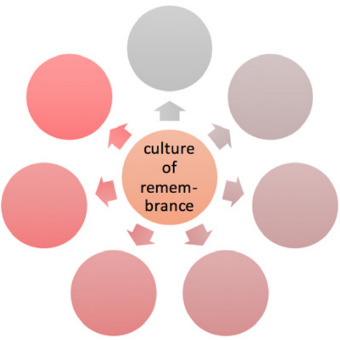
Stage II: Main Stage
Study of the material
Analysis of the content of school textbooks through the exhibition “Different Wars”
10 minutes
Students:
-> Acquaint themselves with the materials of the exhibition “Different Wars” (The posters on the theme of “Remembrance”);
-> Fill out a comparative table and, using the “INSERT” method, mark the information with special characters:
"V" = I know this;
"+" = This information is new to me;
"–" = I thought differently; this is contrary to what I knew;
"?" = I don’t understand this, I need explanations and clarifications from the teacher.
| Parameters | Belarus | Russia | Poland | Germany |
| Whom, and what, do they remember? (examples) | ||||
| How do they remember, and for what reason? Do people engage in critical reflection? | ||||
| Extra What events in the various national histories have influenced the culture of remembrance in the period 1945-2020? | ||||
| Extra What are the stages of the formation of the culture of remembrance? | ||||
| Extra How does such a culture of remembrance affect the worldview and the formation of the values systems of young people? | ||||
| Сonclusion: | ||||
Memorialization as a way of reflecting the culture of remembrance
10 minutes
Photographs of monuments from four countries should be shown:
- the monument to German solders who died in both world wars, in Limburg, Germany;
- the monument to the Heroes of the Battle of Moscow, at the Peremilovskaya Height in Yakhroma, Russia;
- the monument “Courage” in Brest, Belarus;
- the monument Katyń Massacre Memorial, Wrocław, Poland.
The students’ task is to identify:
- what is depicted, and the events to which the monument is dedicated;
- the country in which the monument stands;
- what is communicated by the monument (what meaning did the authors invest in it/what message does a person receive when looking at it);
- what influenced the choice of the site where the monument stands;
- what remembrance of the war is conveyed by the monument / country, and what does this tell us about that country’s society?
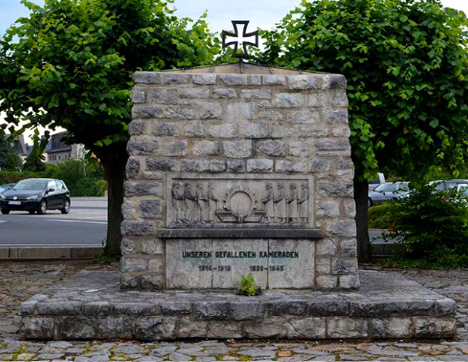
Monument to German soldiers who died in both world wars in Limburg, Germany
Photo: Karsten Ratzke, CCO 1.0.
Public domain: Wikimedia
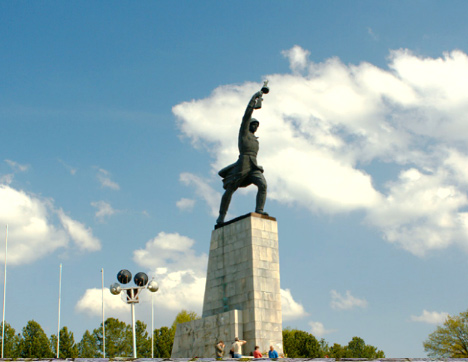
Monument to the Heroes of the Battle of Moscow at the Perimilovskaya Height in Yakhroma, Russia
Photo: Wilberus, CC BY-SA 3.0.
Public domain: Wikimedia
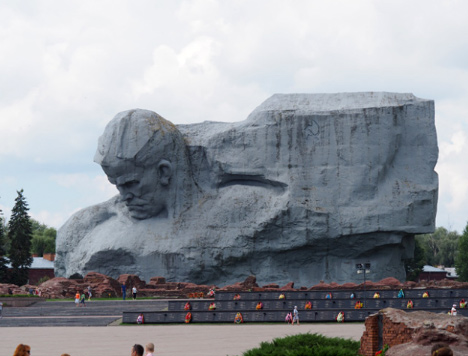
Monument “Courage” in Brest, Belarus
Photo: Jan Szkudliński
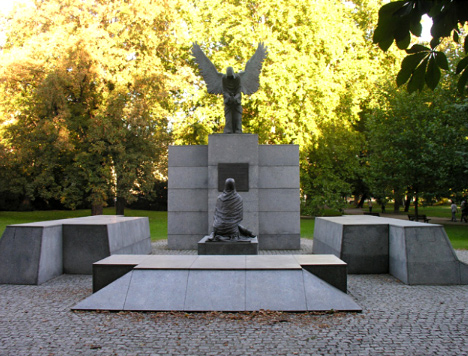
Katyń Massacre Memorial, Wrocław, Poland
Photo: Bonio, CC BY-SA 3.0.
Public domain: Wikimedia
A common European remembrance
10 minutes
The students are divided into three groups, each of which receives one of three photographs of monuments for study (note: the students are not told the names of the cities where the monuments are to be found).
Minsk (Belarus)
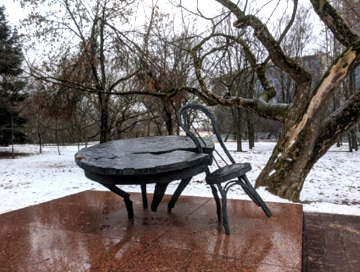
Photo: Darya Kasyakova
Berlin (Germany)
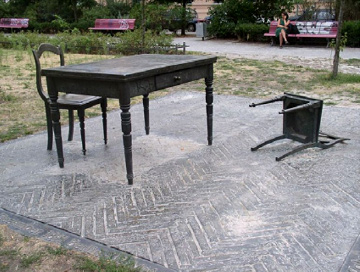
Photo: Achim Raschke. Public domain: Wikipedia
Krakow (Poland)
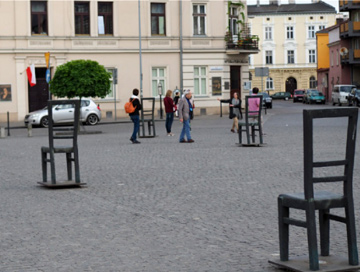
Photo: Jan Szkudliński
The students’ tasks:
To carry out a multisensory analysis of the monuments, completing these sentences:
In the photograph I see ... What do I ask myself when looking at the picture? (Home furnishings, a broken table, a fallen chair, many empty chairs in the square, things without people. Why are these things broken or placed far apart around the square).
I smell ... (Homemade food or, conversely, dust).
I hear ... (Absolute silence, because there is no longer anyone in the house where these things were. Or, perhaps, gunshots, the tramping of boots, men shouting loud orders, a woman’s screams, children crying, the sound of furniture - everything that happened here on the day the house and the family hearth were left empty).
I feel ... (On the one hand, danger, fear, misfortune, human suffering, the hope of being saved. I am worried about what happened here or might yet happen. On the other hand, knowing what has already happened, I feel the pain of the people who were driven out of the house and sent to die. I feel grief for the innocent victims, and bitterness that families were separated and people lost their loved ones).
I am afraid that ... (Events might repeat themselves, a similar tragedy could happen to any family, etc.)
I hope that ... (At least one of the family members who suffered during the war will survive and be able to return. The memory of those who died will be kept alive in their family/city, that people were not simply killed and forgotten. The Holocaust and other crimes against humanity of the Second World War will never be repeated).
Discussion
After presenting the work done in their groups to the whole class, the students should work on the following assignments, in the format of a general discussion:
- Identify the fundamental idea common to all three monuments;
- Reflect on why sculptors from different countries have used images of a broken, abandoned house and things without people;
- Find out (for example, using google.image) in which cities in Europe the monuments in the assignments are to be found, and how they unite the peoples of Europe in preserving the memory of the Holocaust.
After the work has been completed, the teacher should invite the students to remember / find out / suggest places of remembrance in Europe which might serve as sites of a common European remembrance of the events of the Second World War; places where representatives of different countries could meet, and, preserving the memory of the past, together enter into a dialogue to resolve modern problems.
As an extra or homework assignment: propose a project of how a pan-European mon- ument dedicated to the preservation of the memory of the Second World War might look. Who would it be dedicated to? What might it look like (verbal description or drawing by the students)? What materials might it be made of? Where might it be placed? When might representatives of different countries gather at this place? For what purpose would these meetings be held? What inscriptions would you place on it, addressed both to eyewit- nesses of the war and to current generations? What language would these inscriptions be written in?
Stage III: Consolidation and reflection
5 minutes
Students return to the diagram they created at the beginning of the lesson and supplement it, taking into account the information received during the lesson and their reflections on it.
For reflection, the teacher proposes that the students put the following “remembrance quotes” of one family into the correct order, and analyze what happens to society’s memory with the passage of time.
- My grandfather lived throughout the war in his home town in the west of the country.
- On that Monday at 10 o’clock in the morning I saw from the window of my room a bomb falling onto house No.15 in our street.
- My great-grandfather lived during the war.
- My father was a 9-year-old child when the city where he lived was bombed.
What country did this family live in / could this family have lived in?
Expected Result
The students understand that these are quotes from representatives of different generations of the same family: 2 is an eyewitness of wartime events and a witness of the Second World War (first generation); 4 is the child of a witness to events (second generation); 1 is the grandchild of a witness to events (third generation); 3 is the great-grandchild of a witness to events (fourth generation).
This family could live in virtually any country in Europe: cities in Poland and the USSR in the first stages of the war, and German cities in the war’s final stage were heavily bombed, as a result of which people lost their homes, and families lost their loved ones. In this way, the students will understand that although the story of the war in each country has its own participants, its own milestone dates and key events, the memory of the war is shared by all peoples. After ordering the “remembrance quotes” in the correct chronological sequence, you can clearly see that the further a person is from the events described, the less he or she knows / remembers about it, and over time, this can lead to a complete loss of memory both in the family and in the world community as a whole. A common European remembrance of the events of the Second World War is a platform for international dialogue and the peaceful settlement of conflicts in the modern world, and its obliteration or loss might lead to future humanitarian disasters caused by war.
Summing up the lesson
Students should affix their sticky notes next to the equation “Maintaining remembrance in the present = Not repeating the past (“Never again”)” (Agree – white sticker, disagree – blue sticker). It would be good if the students could write on the stickers what they learned from this lesson.
Material for students
Exhibition “Different Wars”
Memorialization as a way of reflecting the culture of remembrance
Photographs of monuments from four countries:
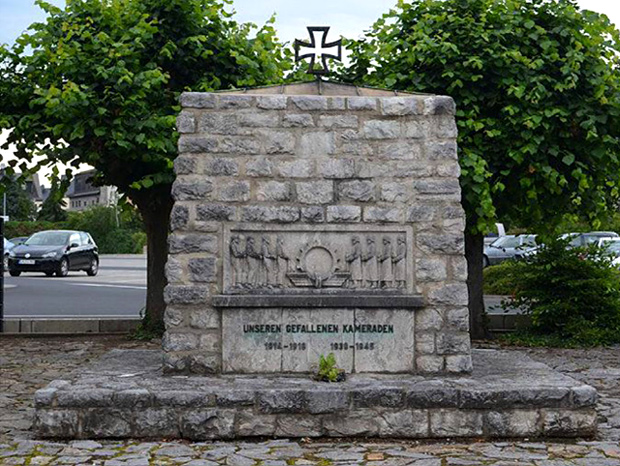
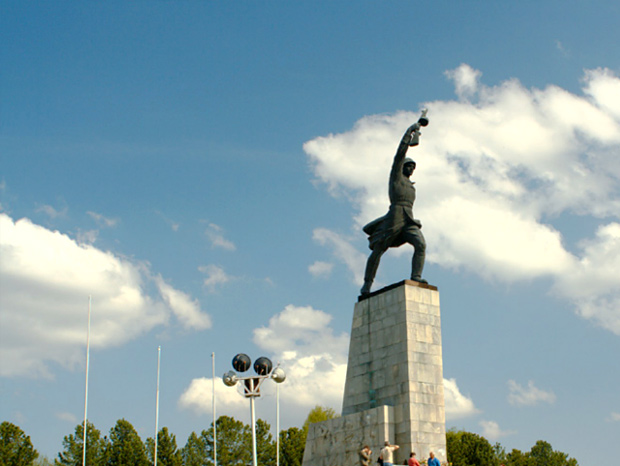
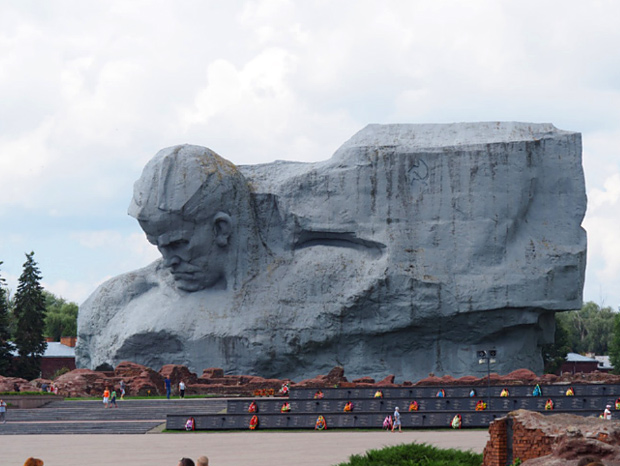
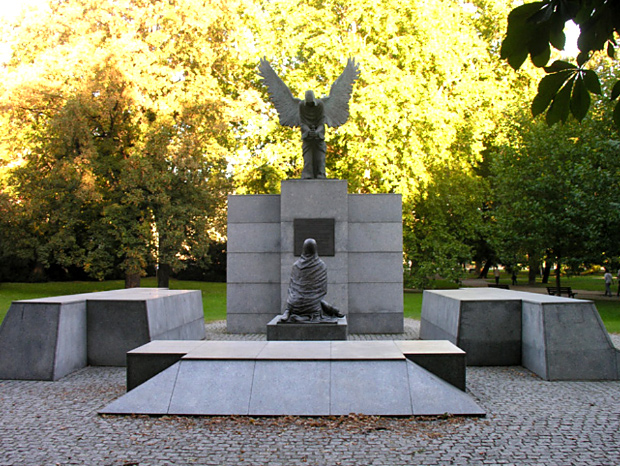
A common European remembrance
Monuments
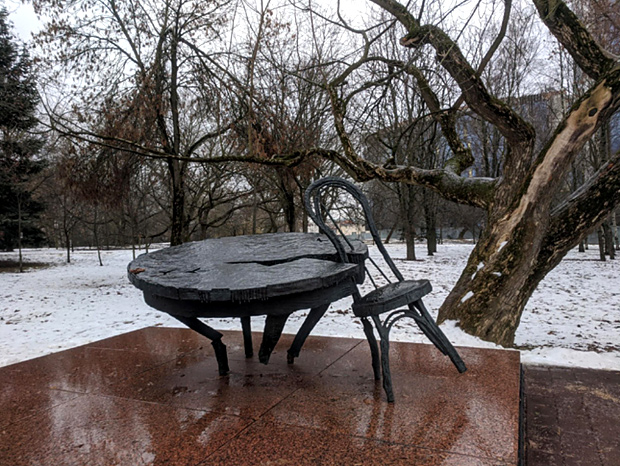
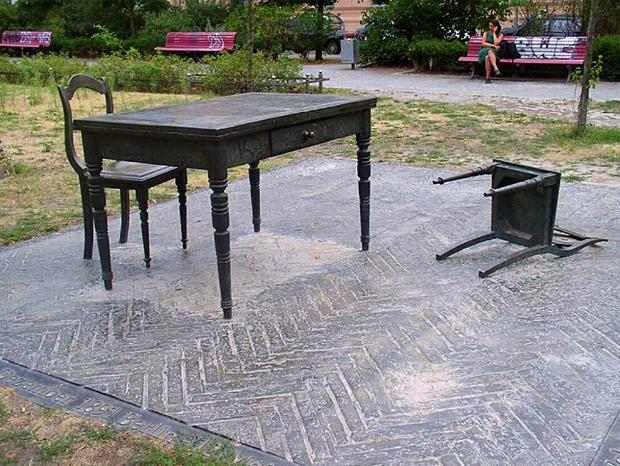
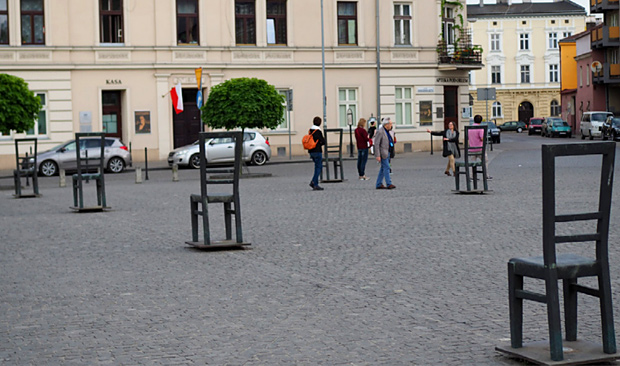
Other Lesson Materials
The beginning and end of World War II
Children in World War II
Young people and forced labour during World War II
Border changes resulting from World War II
Consequences of World War II
Video: Clash of Memories